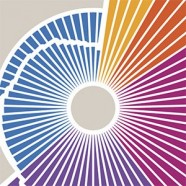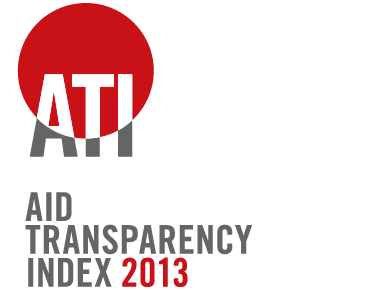More is not enough
Despite the progress we have seen over the past few years, it is not enough to encourage organisations to simply release data – we now need to look at how useful that information is. For example, publishing information in PDFs is more transparent than not publishing it at all, but the information is not necessarily that useful if it is difficult to access, analyse and reuse. In contrast, IATI publishers organise and publish their information more consistently, particularly at the activity level. This is why the format, quality and comparability of information are as important as availability and coverage.
More organisations are coming to understand the value of comparable data. The basic principle that aid information should be publicly available in easy to use, accessible formats is now accepted as an essential component of international development – from the debates around the post-2015 Millennium Development Goals to the hundreds of commitments made by countries involved in the Open Government Partnership. By publishing to IATI, organisations are providing current information in a standardised, comparable format that is useful and more meaningful, because it can be compared across donors, sectors, countries or all three.
CloseThe trend towards openness

This year marks the fifth anniversary of the campaign for aid transparency.
Transparency is now seen as a key pillar of development – a necessary condition to enable effectiveness, accountability and social change. Over the past five years, information on aid spending has slowly become more available and open. There is increased recognition that for aid to be transparent, it needs to be shared openly in a timely, comprehensive, comparable and accessible way. The International Aid Transparency Initiative (IATI) remains the only common standard for publishing aid information which satisfies all of these elements, ultimately increasing the usefulness of the data.
In 2013, some of the largest and most influential providers of aid reaffirmed their commitment to transparency and have started publishing more information in more useful formats. The High-Level Panel report on the post-2015 development agenda called for a “data revolution” and proposed a new international initiative in order to get the job done. In June 2013, the G8 members agreed to implement IATI, and France recently announced its intention to commence publication to the IATI standard in 2014. These political commitments now need to be translated into effective implementation if the calls for a revolution are to be met.
Since its pilot in 2011, the Aid Transparency Index (ATI) has become the industry standard for assessing the state of aid transparency among the world’s major donors while encouraging progress and holding them to account. The Index data collection process has evolved during this time too, with the introduction in 2013 of the Aid Transparency Tracker, an online data collection platform. The Tracker includes three components – an automated data quality assessment tool; an online survey tool; and an implementation schedules tool. The Tracker highlights what information donors have committed to publish, as well as what they are currently publishing.
CloseNew methodology for new challenges
The 2013 ATI uses a revised methodology that reflects the changes in the aid transparency landscape and the resulting need to better assess the quality of published data. As a consequence, some indicators and the data collection process are somewhat different this year, and the scoring takes into account the format of the data. Of the 39 indicators used, three look at organisations’ overall commitment to aid transparency – for example the quality of their Freedom of Information legislation and portals to access the data – and the remaining 36 look at the specific information donors are publishing. This takes into account the accessibility of the information, so the more open and comparable the information is, the more highly valued it is.
The incentives in the ATI are very clearly structured this year: more points are awarded for publishing in more useful formats. As a result, there are clear ways for organisations included in the Index to improve their aid transparency and boost their scores. Put simply, organisations that are not publishing in open, comparable and machine-readable formats should begin doing so. All organisations need to improve the comprehensiveness of their data and promote access and use. Finally, as in previous years, timeliness is a core criterion – the Index only scores data published in the previous 12 months.
Close
The results
The 2013 results demonstrate that there is a leading group of organisations publishing large amounts of useful information on their current aid activities. The top ranking agency is U.S. MCC, scoring 88.9%, while China takes the last place scoring only 2.2%. At the top end, MCC (88.9%), GAVI (87.3%), UK DFID (83.5%) and UNDP (83.4%) are all nearly 10 or more percentage points ahead of the next highest donor. The average score for all organisations is comparatively low at 32.6%, with 25 organisations scoring less than 20%. As in previous years, larger organisations generally perform better overall. Multilaterals as a group tend to score higher than bilaterals, although the performance of individual organisations within each group varies significantly.
Several organisations, including the AfDB, Canada, EC ECHO, EC Enlargement, EC FPI, GAVI, Germany, UNDP, UNICEF, U.S. MCC and U.S. Treasury have made big improvements in 2013 by publishing more information in accessible and comparable formats such as IATI XML or CSV, leapfrogging others that have not made any significant changes to the amount of information they publish, or publish in less useful formats such as websites or PDFs. The top 27 agencies all publish at least some information in IATI XML. Some IATI publishers fall into the poor category however, because they are not publishing enough current or comprehensive information in IATI XML or in other formats.
Turning transparency promises into reality can be hard. The challenge now is to create a virtuous circle of more data use and higher data quality. Wide-ranging use of aid information is likely to bolster donors’ resolve in constantly improving the breadth and quality of their publication. Understanding how and why people use this data will continue to be a goal for all development actors – and will mean working closely with diverse partners to make a real difference.
Close